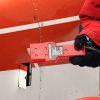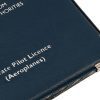Cessna 150
Cessna 150 Overview
The Cessna 150 is a two-seat, single-engine, tricycle-gear aircraft designed primarily for flight training and personal use. Manufactured by Cessna Aircraft Company from 1958 to 1977, it became one of the most popular general aviation aircraft due to its affordability, simplicity, and forgiving flight characteristics. As a cornerstone of pilot training worldwide, the Cessna 150 has introduced countless aviators to the skies.
Description
The Cessna 150 features a high-wing design, providing excellent visibility for pilots and students during training and navigation. Its all-metal airframe is both durable and easy to maintain, contributing to its longevity and widespread use. The fixed tricycle landing gear enhances ground handling and stability, making it an ideal choice for novice pilots.
The cockpit is designed for functionality and ease of use, with simple analog instruments arranged for straightforward operation. Despite its compact size, the aircraft provides adequate comfort for two occupants and includes a modest baggage compartment with a 120-pound capacity, ideal for light luggage or equipment.
Powered by a reliable Continental O-200 engine, the Cessna 150 is optimized for efficiency and low operating costs. Its lightweight construction and aerodynamic design contribute to its steady and predictable flight characteristics, offering a confidence-inspiring experience for trainees.
Specifications
| General Specifications | Details |
|---|---|
| Manufacturer | Cessna Aircraft Company |
| Production Years | 1958–1977 |
| Role | Trainer, Personal Use |
| Capacity | 2 (Pilot and Passenger) |
| Length | 23 ft 11 in (7.29 m) |
| Wingspan | 33 ft 4 in (10.16 m) |
| Height | 8 ft 6 in (2.59 m) |
| Wing Area | 159 sq ft (14.8 m²) |
| Empty Weight | 1,110 lbs (503 kg) |
| Max Takeoff Weight (MTOW) | 1,600 lbs (726 kg) |
| Engine | Continental O-200-A, 4-cylinder, 100 hp (75 kW) |
| Propeller | Fixed-pitch |
| Fuel Capacity | 26 gallons usable (98 liters) |
| Range | 425 nautical miles (490 mi / 787 km) |
| Cruise Speed | 104 knots (120 mph / 193 km/h) |
| Service Ceiling | 14,000 ft (4,267 m) |
| Takeoff Distance (50 ft obstacle) | 1,385 ft (422 m) |
| Landing Distance (50 ft obstacle) | 1,075 ft (328 m) |
Performance
The Cessna 150 delivers predictable and consistent performance, making it an ideal training platform. Powered by a 100-horsepower Continental O-200 engine, the aircraft has a cruise speed of 104 knots, suitable for short cross-country flights and training operations. Its efficient design results in a fuel consumption rate of approximately 6 gallons per hour, keeping operating costs low.
With a maximum range of 425 nautical miles, the Cessna 150 is capable of moderate-distance trips while still being economical. The aircraft’s handling is forgiving and stable, with a low stall speed of around 42 knots. This ensures that students can safely practice slow flight and landings without undue stress.
The 150’s short takeoff and landing distances, combined with its tricycle landing gear, make it accessible to small airports and grass airstrips. Its lightweight build and high-wing design further enhance its stability and ease of operation.
Conclusion
The Cessna 150 has long been a benchmark in general aviation, especially in the field of pilot training. Its durability, low operating costs, and straightforward flying characteristics have ensured its place as a favorite among flight schools and private owners alike. Decades after production ceased, the Cessna 150 continues to be a trusted and beloved aircraft for learning and recreational flying.








